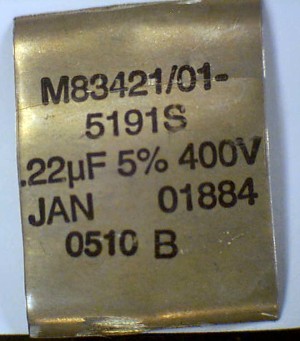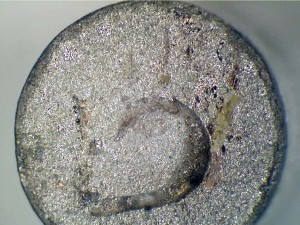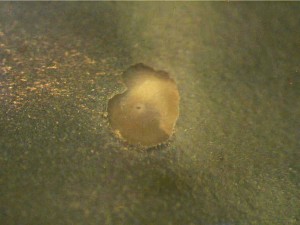Failure Analysis on Metallized Film Capacitor
Gideon Analytical Labs received one M83421/01-5191S film capacitor with lower than expected capacitance for failure analysis. This device is a fixed metalized paper-plastic dielectric hermetically sealed capacitor in a metal can. Metalized film capacitors are made of two metalized films with plastic film as the dielectric. A very thin vacuum deposited aluminum, tin or zinc metallization is applied to one or both sides to serve as electrodes. This configuration has “self-healing” properties, in that dielectric breakdowns or short circuits electrodes do not necessarily lead to the destruction of the component. With this design, it is possible to make a high-quality product with “zero defects” and to produce wound capacitors with large capacitance values. The disadvantage of metalized construction is its limited current surge rating. The self-healing aspect comes into play when a voltage is applied to the capacitor; the shorted areas will burn away by the voltage. Typically, there are no long-term shorts in film capacitors. The capacitance was measured at 8.7pF instead of the expected .22uF.
The end seals were removed as well as the wound. The can was pried open and the element was removed. The fiberglass mesh and rubber were removed exposing the capacitor element below. The capacitance was again checked. No change in capacitance. The Schoopage metal terminals were checked and inspected. After several layers into the unwinding process, a hole appeared transgressing many many layers of dielectric film.
The dielectric breakdown was due to a voltage spike. The picture reveals a spot with no metallization. This lack of metallization is normal and inherent in the film capacitor process; it is nothing to be concerned about. In the middle is a hole in the plastic film. This is where the dielectric breakdown occurred.
No other anomalies were noted during the remainder of the unwinding process. This failure mode is an application issue and not a component process issue.
The capacitor losses capacitance when the layers of the dielectric film become separated by the energy discharge through the dielectric film. This “gap” renders the capacitor lower in capacitance and is non-recoverable. If this spike were through a couple layers of dielectric, this would not cause a sufficient reduction in capacitance.
Failure analysis performed by Gideon Analytical Laboratories can solve serious problems in the production and application process by revealing the nature of failures. This can save a variety of companies in the electronics industry enormous amounts of time and money. Call us 845-255-5356.

Military Style Film Capacitor

Schoopage Metal on the Termination

Failure Site in the Plastic Film